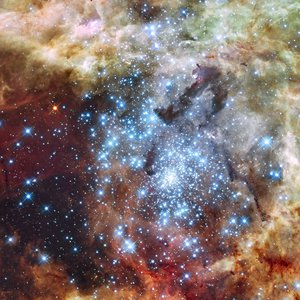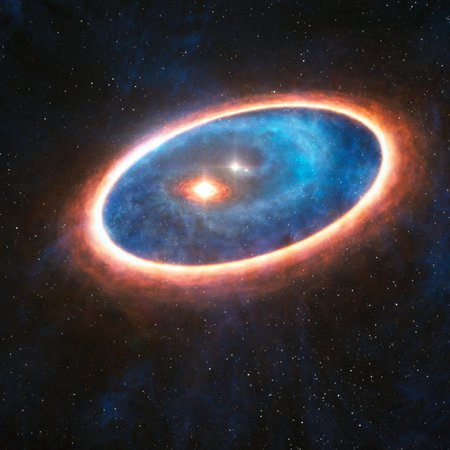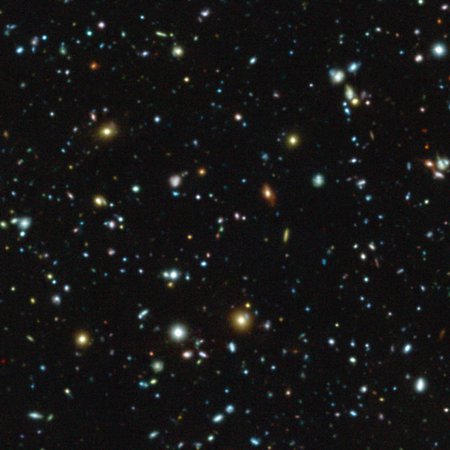Virtual lecture: Babelsberg Starry Night on 20th February 2025
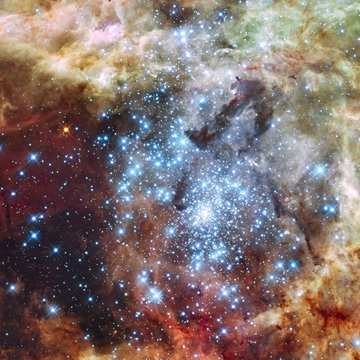
Hot, blue stars like those in the star-forming region of 30 Doradus are usually very young. How old can stars actually get and how can their age be determined?
Credit: NASA, ESA, Elena Sabbi (ESA, STScI)The next talk of the Virtual Babelsberg Starry Nights of the Leibniz Institute for Astrophysics Potsdam (AIP) on the topic "The age of stars – and how it can be determined" (German) by Dr. David Gruner will be broadcast on the YouTube channel “Urknall, Weltall und das Leben” (Big Bang, Universe and Life) from Thursday, 20.02.2025.
Dr David Gruner's lecture on ‘The age of stars - and how to determine it’ from the Babelsberg Starry Nights series will be online on Thursday at 8 pm. It’s often not easy to find out how old stars actually are, as the age of a star cannot simply be measured. Instead, researchers use directly measurable properties of stars that change significantly and systematically over the course of a star's life. In his lecture, David Gruner will discuss various methods and measurement parameters that are used to determine the age of stars. One of the reasons why the age of stars is so interesting is that life develops over billions of years and we can therefore learn more about the probability of life on planets around distant stars.
Usually on the 3rd Thursday of each month, starting at 8 p.m., the lectures of the Babelsberg Starry Nights become available at
https://www.aip.de/babelsberger-sternennaechte
and via the YouTube channels "Urknall, Weltall und das Leben" (Big Bang, Universe and Life) and "videowissen" and can be viewed afterwards at any time.
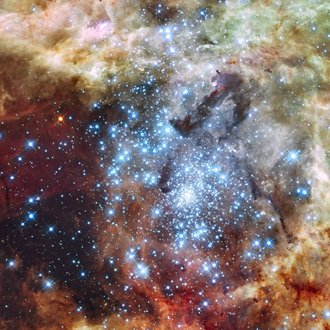
Hot, blue stars like those in the star-forming region of 30 Doradus are usually very young. How old can stars actually get and how can their age be determined?
Credit: NASA, ESA, Elena Sabbi (ESA, STScI)The next talk of the Virtual Babelsberg Starry Nights of the Leibniz Institute for Astrophysics Potsdam (AIP) on the topic "The age of stars – and how it can be determined" (German) by Dr. David Gruner will be broadcast on the YouTube channel “Urknall, Weltall und das Leben” (Big Bang, Universe and Life) from Thursday, 20.02.2025.
Dr David Gruner's lecture on ‘The age of stars - and how to determine it’ from the Babelsberg Starry Nights series will be online on Thursday at 8 pm. It’s often not easy to find out how old stars actually are, as the age of a star cannot simply be measured. Instead, researchers use directly measurable properties of stars that change significantly and systematically over the course of a star's life. In his lecture, David Gruner will discuss various methods and measurement parameters that are used to determine the age of stars. One of the reasons why the age of stars is so interesting is that life develops over billions of years and we can therefore learn more about the probability of life on planets around distant stars.
Usually on the 3rd Thursday of each month, starting at 8 p.m., the lectures of the Babelsberg Starry Nights become available at
https://www.aip.de/babelsberger-sternennaechte
and via the YouTube channels "Urknall, Weltall und das Leben" (Big Bang, Universe and Life) and "videowissen" and can be viewed afterwards at any time.
Images
Hot, blue stars like those in the star-forming region of 30 Doradus are usually very young. How old can stars actually get and how can their age be determined?
Big screen size [1000 x 1000, 240 KB]
Original size [2500 x 2500, 1020 KB]
